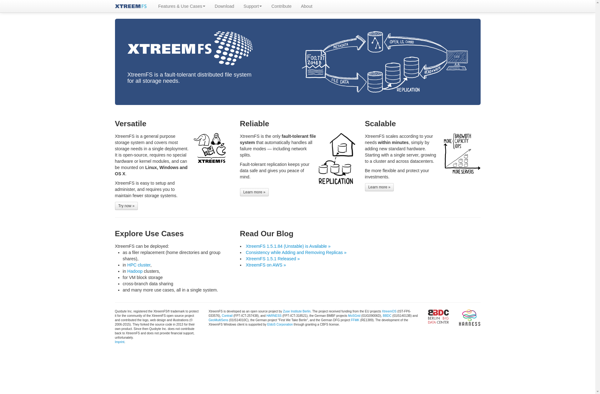Ext2Fsd

Ext2Fsd: Open-Source Ext2, Ext3, and Ext4 Driver for Microsoft Windows
An open-source driver providing read and write access to ext2, ext3, and ext4 Linux file systems on Microsoft Windows, allowing native mounting without a separate Linux system.
What is Ext2Fsd?
Ext2Fsd is an open-source driver for Microsoft Windows that provides full read and write access to the ext2, ext3, and ext4 Linux file systems. It works by implementing the necessary file system drivers at the Windows kernel level, allowing Windows to mount Linux file system partitions natively.
Some key features of Ext2Fsd include:
- Read and write access to ext2, ext3, and ext4 partitions from Windows
- Support for mounting partitions and image files
- Ext3 journal replay for recovery and consistency
- Unicode file name support
- Symlink and special file support
- Userspace tools for mount/unmount and file system checks
Ext2Fsd allows Windows users to easily access data and files stored on Linux file systems without needing to install Linux or boot into a separate environment. It can be useful for dual-boot users who need to share files between Windows and Linux. It also facilitates data recovery and backup of Linux partitions or disk images.
As an open-source project, Ext3Fsd is being actively developed on GitHub. It provides a valuable capability for interoperability between Windows and Linux file systems.
Ext2Fsd Features
Features
- Provides read and write access to ext2/ext3/ext4 file systems from Windows
- Allows mounting Linux file systems natively in Windows without dual boot
- Supports ext4 file systems including extent, uninit_bg, 64bit, metadata checksum etc
- Stable and mature open source driver developed over many years
Pricing
- Open Source
Pros
Cons
Official Links
Reviews & Ratings
Login to ReviewThe Best Ext2Fsd Alternatives
Top Os & Utilities and File System Drivers and other similar apps like Ext2Fsd
Linux File Systems for Windows

Paragon ExtFS

DiskInternals Linux Reader

XtreemFS

Ext2 Installable File System

Ext2Read (Ext2Explore)

HFSExplorer

Lustre
